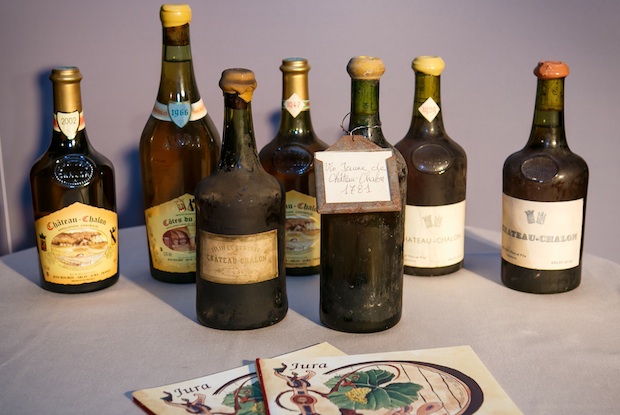Marcher country, the Jura lies to the east of Burgundy and the contrast is marked. Burgundy: the very name is redolent of opulence. The architecture, the courtliness, the great wines: the aristocratic civilisation of Burgundy is a dance to the cornucopia of nature. Among the rocks and hills and gorges of the Jura, nature is less generous: livelihoods harder wrought. But as so often in European history, adversity has been the nursery of triumph.
The Jura produces a famous wine, vin jaune. Until this week, I had hardly tasted it. That has now been rectified, in a spectacular manner. Those who try to write about wine often talk of terroir, minerality and tradition. With vin jaune, those are understatements. This is an old-fashioned wine, made as it was centuries ago: tasting as wines of earlier eras probably tasted, when preservation was the first priority.
Left to itself, wine will oxidise and deteriorate. Down the ages, vignerons have striven to prevent that happening. The Jurans found their solution. They allow a degree of oxidisation to occur while the wine is still in the barrel. Around 40 per cent of the wine evaporates during its first seven years, while it ferments under a yeast crust. The result: the longest-lived wine of all.
We started with an adolescent: the 1947. I might have guessed that it was ten or 12 years old. At first acquaintance, one could mistake it for a fino sherry. It is mouth-puckering: there is plenty of acid. Then the flavours fill out: nuts, subtlety, spices — and length. There is a tremendous nose, and the aftertaste goes on for ever. We moved on the 1929, and the vin jaune showed no signs of age. It was in vigorous prime of life.
These wines came from Château Chalon, the finest vin jaune, and from the family cellar of Jean Bourdy. The Bourdy family have been making wine since the 16th century. Rather like a great nobleman planting a new wood for posterity, they have all grown accustomed to laying down wines which their grandchildren will drink, or sell.
Or perhaps that should be great-great grandchildren. The climax was an 1895. The phylloxera infection was slow to reach Jura; this was from pre-phylloxera vines. On first sniff, I thought I detected just a soupçon of mustiness. If so, it was mere bottle-stink from air that had been trapped for over a century. 1895: Rosebery’s brief prime ministerial vintage had just spluttered out, like an ill-made candle. Here was a wine of that same year. I was ready to be sceptical. One wants to drink wine, not a label. A wine of great age obviously arouses curiosity, but what will it taste like?
Doubts and scepticism were instantly dispelled. This was a wine in the plenitude of maturity: a patriarch in age, a paterfamilias in authority. The power, the length; this is a remarkable wine. It is not easy to accommodate with food, or with other wines. It requires — and is entitled to — concentration. An aperitif? Possibly, but leave plenty of time for the last lingering flavour to dissipate. Despite the Fino comparison it is not fortified and only clocks about 13 degrees of alcohol. Even so, I think that it would work as a digestif.
How long will it last? Our hosts had a bottle of 1781, which they had recently purchased for £38,000. We were willing them to make a mistake and open it. When last tasted, we were told, the 1781 had been superb. I see no reason to disbelieve it.
Apropos digestifs, our munificent benefactors, Oracle Capital Group, run inter alia a wine investment fund, and they have a magnificent holding of cognacs. In other hands, wine investment might seem a dubious concept, but David Nathan-Maister and his colleagues are reverent oenophiles. There are moments when it would be fun to be an oligarch.






Comments